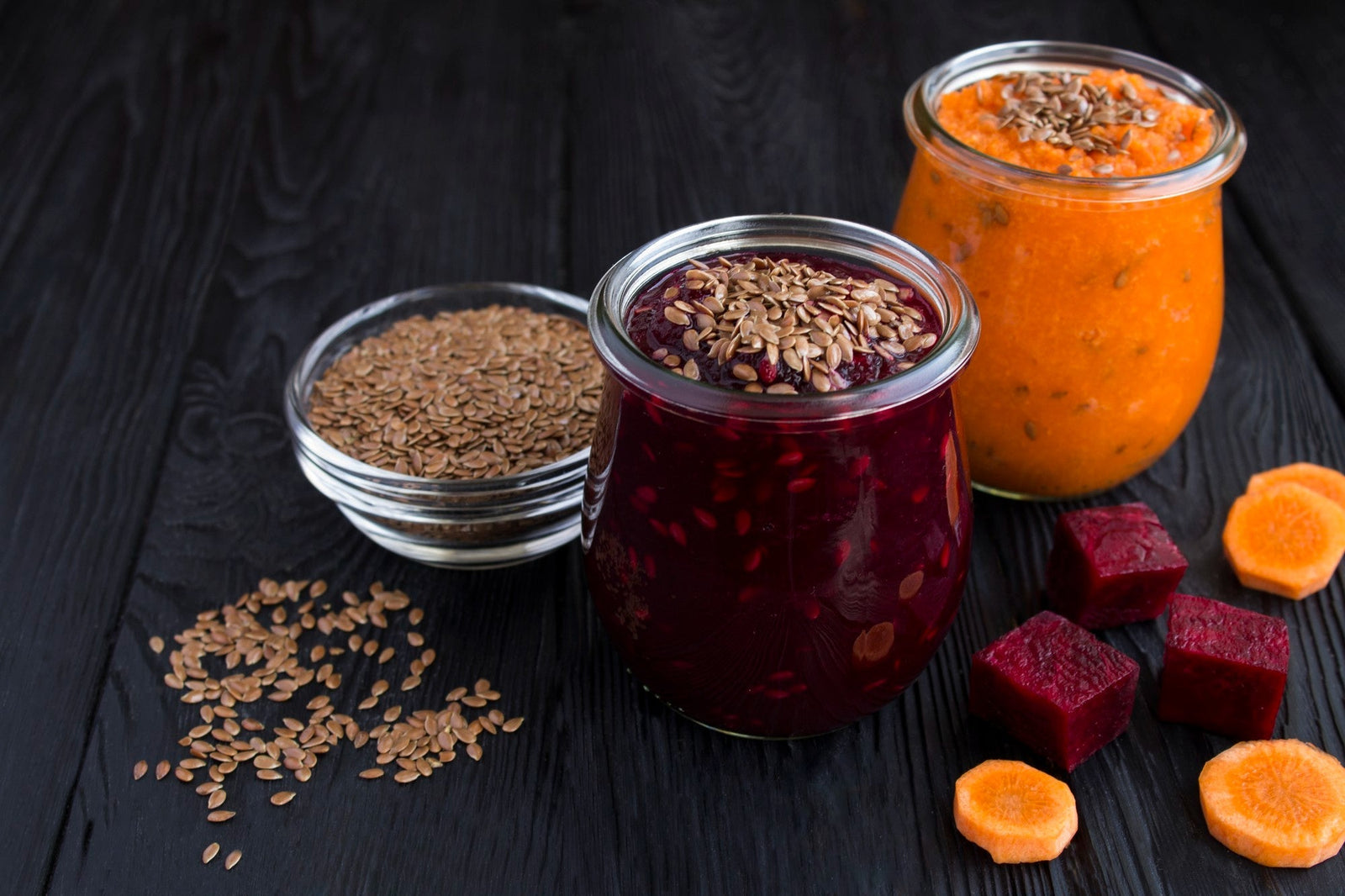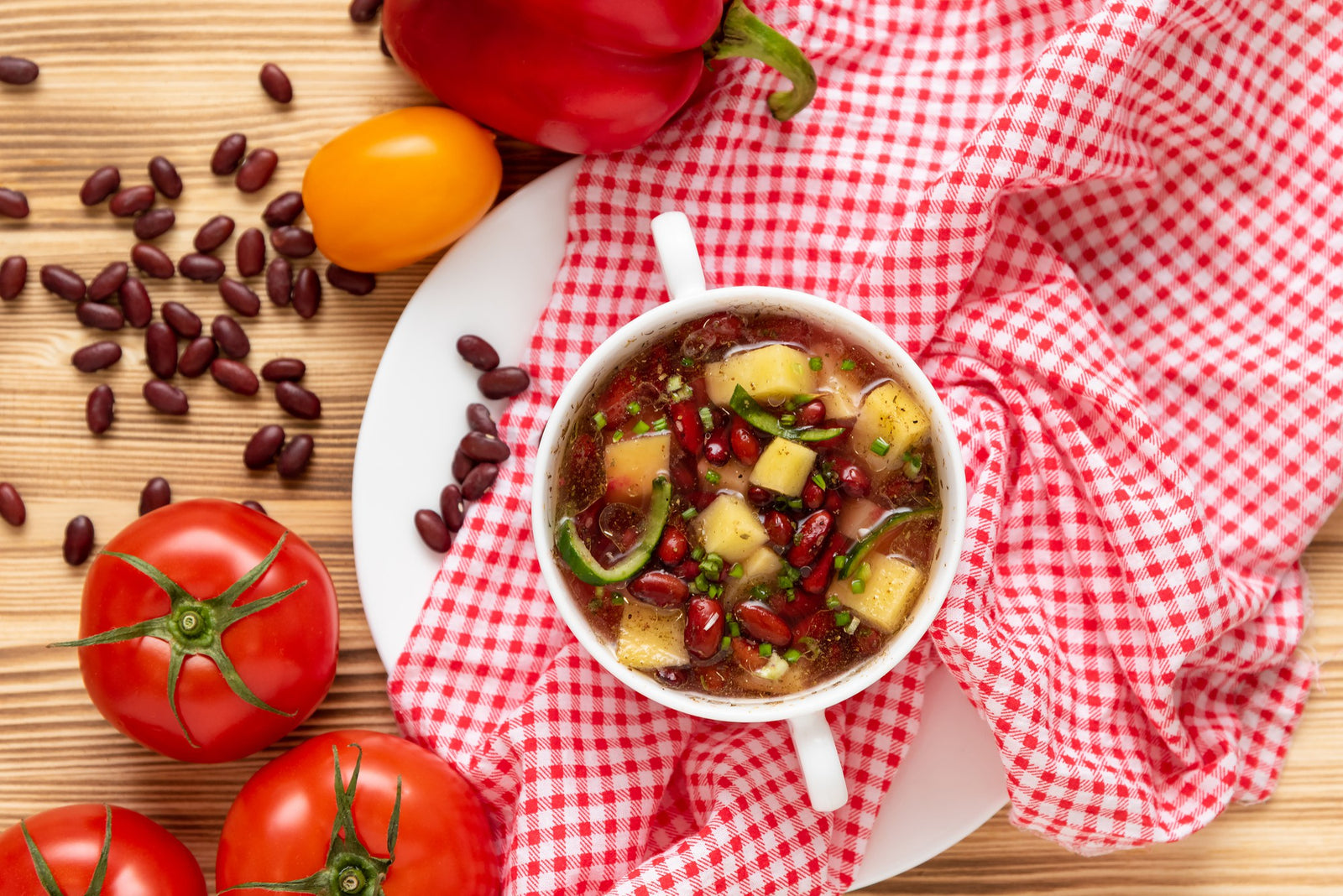
May 31, 2022 3 min read
Dark red kidney beans are incredibly versatile and have countless uses. They are fantastic to use in soup, stew, or chili, as they are more firm than other types of beans and therefore hold together better when cooked for long periods. They can be served with rice, as a side dish, or even eaten by themself. Their meaty texture as well as high protein content make them a great alternative for meat in vegan recipes. They can also be used to make dips, taco salad, burritos, baked beans, or jambalaya. They go well with just about anything and are a great base food to have in the pantry.
Prep

Washing and soaking beans before cooking is necessary to get rid of any dirt, indigestible starches, and microscopic debris. Soaking can help rid them of oligosaccharides, which are a type of sugar that is indigestible and can cause uncomfortable gas and bloating.
It is important to rinse your beans as some dirt and contaminants may not be visible but can be harmful.
In a colander, rinse your kidney beans off using your hands to make sure they are thoroughly washed. Move the beans to a large bowl and add about 10 cups of water. Use a spoon to stir the beans and to scoop up any floating beans or small rocks. Let beans soak for 6-8 hours or preferably overnight. Drain and rinse once more.
If you are in a hurry to cook your beans, you may choose to use the quick-soak method.
For this method, thoroughly rinse the beans and add them to a large pot. Cover the beans with an inch of water and bring to a boil. Boil for 3 minutes and then let sit for an hour. Remove any floating beans or bean shells and drain.
This method is helpful in a pinch, although we recommend the long soak method to ensure the beans are more efficiently soaked.

Cooking
Now that the beans have finished soaking, they are ready to be cooked.
Add the dark red kidney beans to a large pot of water (a good rule is to add 5 cups of water per 1 cup of beans) and bring to a boil. Let boil for 10 minutes, stirring occasionally. Remove any foam that may appear by skimming the surface with a spoon. To add some flavor to your beans, add 2-3 bay leaves and some salt to the water. Reduce heat and let simmer for 25-30 minutes (or until tender), stirring every so often.
The cook time varies depending on what soaking method you used. If you used the quick-soak (or boil-soak) method, the beans may cook faster, so check them with a fork about 10 minutes before the timer goes off.
Drain the beans and serve.
Storing
Cooked dark red kidney beans can be stored in the fridge or the freezer. To store in the fridge, place in a covered container for 5-6 days.
To freeze your kidney beans, place them in an airtight container or ziplock bag and store them in the freezer for 4-6 weeks.
Tip: If you want an easy and quick dinner prep, you can cook your beans ahead of time and store them frozen. If you choose to freeze them, do so immediately after cooking, just drain and rinse your beans with cold water before placing them in the freezer. Storing the beans in the freezer gives you an option if you don't have enough time to soak them, just defrost and reheat for a quick and easy dinner!
Thanks for reading this Be Still Farms Blog article. To sign up for more news/articles and/or recipes, click here. For more about us, click here. To shop our certified organic products, click here.
Please comment and share and we look forward to serving you in the future!
Comments will be approved before showing up.

January 27, 2025 3 min read
Flaxseed, the tiny yet powerful superfood, is packed with nutrients that can support weight loss. From curbing hunger to stabilizing blood sugar, this guide dives into the science of how flaxseed can help you shed those extra pounds.

December 11, 2024 3 min read
Discover three quick and easy soup recipes featuring organic small red beans. From a classic vegetable soup to a creamy potato blend, these wholesome recipes are perfect for chilly days and busy weeknights. Packed with flavor and nutrition, these soups will warm your heart and soul this winter!

December 06, 2024 3 min read
This vibrant and nutritious Green Lentil Salad combines tender lentils with grilled chicken, fresh vegetables, and a zesty lemon dressing. Packed with protein, fiber, and essential vitamins, it’s the perfect healthy meal for any time of day.
© 2026 Be Still Farms- Real, Fine Organics.
Privacy | Terms | Refund Policy | Organic Certification
